Additional notes (click to expand)
Medicinal
Culpeper: “... it also purgeth, cleanseth the blood, opens obstructions of the liver.”
Culpeper, Nicholas. (1650). A Physical Directory . London, Peter Cole.
Not the same thing as the well known edible rhubarb, Rheum hybridum. It is used for a wide spectrum of conditions by herbalists, but is mainly laxative due to anthraquinones (also present in Senna) which are a gastrointestinal irritant.
Oakeley, Dr. H. F. . (2013). The Gardens of the Pharmacopoeia Londinensis.
link
Herbalists use the roots, not the leaves which contain soluble oxalates which impair blood clotting, and cause vomiting and diarrhoea. As a herbal medicine, the roots of Rheum officinale is said to be more effective than Rheum palmatum (Turkey rhubarb), the leaves of which are used to make an insectide.
Oakeley, Dr. H. F. . (2013). The Gardens of the Pharmacopoeia Londinensis.
link
Nomenclature
Rhabarbi-monachorum, Patience, Monks-reubarb, Bastard-Reubarb
Culpeper, Nicholas. (1650). A Physical Directory . London, Peter Cole.
Geographical distribution
- Asia-Temperate, China, Tibet
Podcast
Rheum officinale Baill.
Family: POLYGONACEAEGenus: Rheum
Species: officinale Baill.
Common names: Chinese Rhubarb; Medicinal Rhubarb
Pharmacopoeia Londinensis name: Rhabarbarum
Distribution summary: West China,Tibet
Habit: Perennial
Hardiness: H5 - Hardy; cold winter
Garden status: Currently grown
Garden location: Pharmacopoeia Londinensis 1618 'Roots' (HSE 2)
Reason for growing: Medicinal
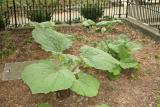
.JPG)
.JPG)
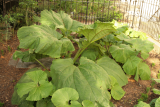
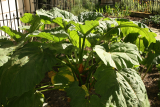
.JPG)
.JPG)

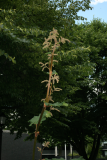

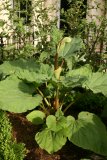
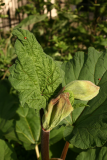
.JPG)